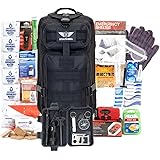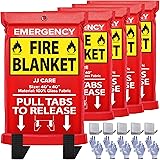The Essential Guide to DIY Survival Tools
- DIY Survival Gear Essentials
- Choosing the Right Tools for Survival
- Making Your Own Survival Tools
- Maintenance and Care of Survival Gear
DIY Survival Gear Essentials
Understanding the Basics of Survival Tools
So, let’s start with the foundation. When I think about survival gear, I’m not just picturing a random assortment of gadgets and gizmos. It’s about knowing what you truly need. For me, the essentials revolve around what helps you obtain food, water, shelter, and safety.
First off, do your homework. Understand the environment you’re living in or heading into. This knowledge shapes your gear choice. In places with harsh winters, for instance, warmth becomes non-negotiable, while in tropical regions, staying hydrated holds the top spot.
Secondly, prioritize multifunctionality. I’ve found that tools like a good knife can be a lifesaver in more ways than one. You can use it for food preparation, shelter building, self-defense or even a signaling device. The fewer tools I have to carry around, the better!
Your Personal Needs and Skill Level
It’s critical to tailor your gear based on personal requirements and experience. When I first started, I overpacked—only to realize that half the stuff I brought was useless. Now, I assess my skills and what I can realistically use.
If you’re a beginner, focus on easy-to-handle gear. My first survival tool was a basic camping knife, and I still recommend it because it’s straightforward and versatile. It doesn’t matter if it’s fancy; if you can’t use it effectively, it’s just dead weight.
Lastly, think about your convenience. If you don’t feel comfortable carrying a hefty pack filled with gadgets, opt for lighter alternatives that pack a punch. Trust me, in a survival situation, comfort and usability can mean the difference between thriving and just getting by.
== > What if ... Get a FREE Subscription to PREPARE
Budgeting for Essential Gear
Now, let’s talk cash. Survival tools don’t have to drain your wallet. I’ve learned the hard way that some of the most expensive items are not the best performers. A sharp knife, a sturdy tarp, and a water filter can all be found at reasonable prices if you do some digging.
Keep an eye out for sales or even used gear in good condition. Many outdoor stores offer second-hand items that still hold up, and you can find stellar deals. To cut costs even more, consider making your own gear if you have the know-how.
Lastly, remember that your priorities should guide your spending. Invest in essentials first, then fill in any gaps. It may be tempting to grab the latest gizmo on the market, but a simple backpack that fits all your essentials will outweigh any flashy tool every day of the week.
Choosing the Right Tools for Survival
Assessing Your Environment
When it comes to picking survival tools, your first move should always be assessing your environment. I can’t stress this enough. Every terrain has its quirks. For instance, if you’re going into a dense forest, you’ll need something for cutting. If it’s open fields, you might need tools that focus on the weather.
Mapping out potential threats in your region also helps. Living in a hurricane-prone area? Tools for securing your home during a storm could be critical.
Staying adaptable is key. You never know where an adventure may take you, so a versatile toolset can go a long way in any location. The last thing you want is to be caught unprepared!
Researching Tool Varieties
Next on the agenda is trying to understand your options. Nowadays, the variety of survival tools can be overwhelming. It’s all about finding what fits your style and needs. I usually spend a good chunk of time skimming reviews and watching demo videos online—it gives me a solid idea of how each tool functions.
I’ve found specific brands that I trust over the years. Community recommendations are golden, so take advantage of them! Ask around in forums or local survival groups. Nothing beats learning from someone else’s experience.
Consider user-friendliness. There’s no shame in sticking to simple tools if that’s where you’re comfortable. I’ve seen stunning, high-tech gear that left my head spinning; it pushed me to choose more straightforward alternatives that got the job done.
Trial and Error
This is my favorite part: actually testing out your gear. Don’t just throw stuff in your pack and hope for the best! I remember going on a camping trip with a new, state-of-the-art knife that looked amazing but didn’t really fit in my hand. It was a disaster!
Go out in the field and see what works for you. Maybe the latest multi-tool is cool, but if it’s not intuitive, you’ll find yourself regretting the purchase in a pinch. I take my gear on short trips to familiarize myself with how things work in real-life situations.
This throws me into some trial and error, but it’s all learning. What matters is that you understand your gear well enough that it almost feels like an extension of yourself when you need it most.
Making Your Own Survival Tools
Why DIY? Cost and Customization
Let’s chat about one of my absolute favorite topics: making my own survival tools. Why buy when you can craft a unique tool that suits your style perfectly? Sure, it takes some finesse, but it can save you bucks and give you that personal touch.
My first DIY tool was a simple sling. Using scraps I found lying around, I created something that I not only used but took great pride in. If you’re crafty at all, this is a rewarding venture—you get to learn and customize your tools at the same time.
Plus, let’s not forget the knowledge you gain through crafting. Every time I whip up a new tool, I enhance my understanding of survival and gear function, which makes me feel like a bona fide survival wizard!
Tools You Can Make
So, what can you actually make? The options are endless! I often start with a few staple items, like a fishing spear or a makeshift fire starter. These are relatively straightforward and incredibly useful in survival scenarios.
For a fishing spear, grab a sturdy stick and sharpen one end using a riverstone—it can snag you dinner in no time.
Fire starters, on the other hand, can range from homemade tinder to flint and steel sets. I’ve had pretty great success creating natural tender using dried leaves and tree bark—find what works best in your local area.
Gathering Materials
A DIY project isn’t just fun; it also pushes you to become resourceful. I often scour my local area to find usable materials. You’d be surprised at how often you can find bits and pieces that can turn into something crucial.
I remember making a snare trap from twigs and cordage when I was stuck during a longer camping trip. Those natural materials saved the day! Just always be mindful of where you’re sourcing your materials—avoid damaging the environment.
Ultimately, nothing beats the satisfaction of crafting your gear. It’s like you’re telling the world, “I’m prepared, and I made this!”
Maintenance and Care of Survival Gear
Cleaning and Upkeep
No point in having the best gear if you let it fall apart! Proper maintenance is crucial to keeping all your tools in top shape. I dedicate some time after every trip to ensure my gear is clean and functional.
For knives and multi-tools, I clean them after each use to avoid corrosion or gunk buildup. Using a soft cloth and mild soap is usually enough. Then I make sure to dry them thoroughly before storage. Pro tip: a drop of oil goes a long way in keeping them rust-free!
Don’t forget about back-up gear, too. Batteries drain, ropes can fray, and all those little pieces need checking. I often set reminders to do a thorough inventory of all my gear, ensuring everything’s ready when adventure calls.
Storing Your Gear Properly
Storage is often overlooked, but it can extend the life of your gear significantly. I’ve learned the hard way that throwing everything in a closet just doesn’t cut it. I store my larger items in weatherproof bins and keep smaller tools in an organized tool bag.
Keep an eye on your environment. If you’re in a moisture-heavy area, invest in some desiccants to keep your gear dry. Even a little care can prevent a lot of headaches when you’re in the field!
Again, periodically reassess your storage. As your gear or needs change, adjust your setup too!
Training with Your Gear
Gear maintenance isn’t solely about cleaning; it’s also about knowing your tools inside out. I take time to practice with them regularly. Pulling out my gear, setting it up, and using it as if I were in an actual situation pays off immensely.
Setting up camp, making fires, or practicing knots raises your confidence levels every time you do it. It’s amazing how muscle memory kicks in when you really need it.
In the end, your gear is a lifeline; treat it well and it will perform for you when it matters most.
FAQs
What are the most essential survival tools for beginners?
For beginners, I recommend a good knife, fire starter, water filter, and a sturdy tarp. These tools cover the basic needs of food, water, shelter, and warmth.
How can I choose the right survival tools for my needs?
Start by assessing the environment you’ll be in and your own skill level. Focus on multifunctional tools and practice with them to see what feels right for you.
Is it really necessary to make my own survival tools?
While not necessary, making your own tools can save money and allow for customization. It also enhances your skills and understanding of each tool’s function.
How should I store my survival gear?
Store gear in weatherproof containers and keep things organized. Regularly check for moisture and make sure anything that could rust or degrade is well protected.
Related Content
Stealth Angel Survival - 72 Hour Family Emergency Kit - 1-5 Person Survival Bag for Earthquakes, Hurricanes, and Other Natural Disasters
Now retrieving the price.
(as of December 20, 2025 17:25 GMT -05:00 - More infoProduct prices and availability are accurate as of the date/time indicated and are subject to change. Any price and availability information displayed on [relevant Amazon Site(s), as applicable] at the time of purchase will apply to the purchase of this product.)





